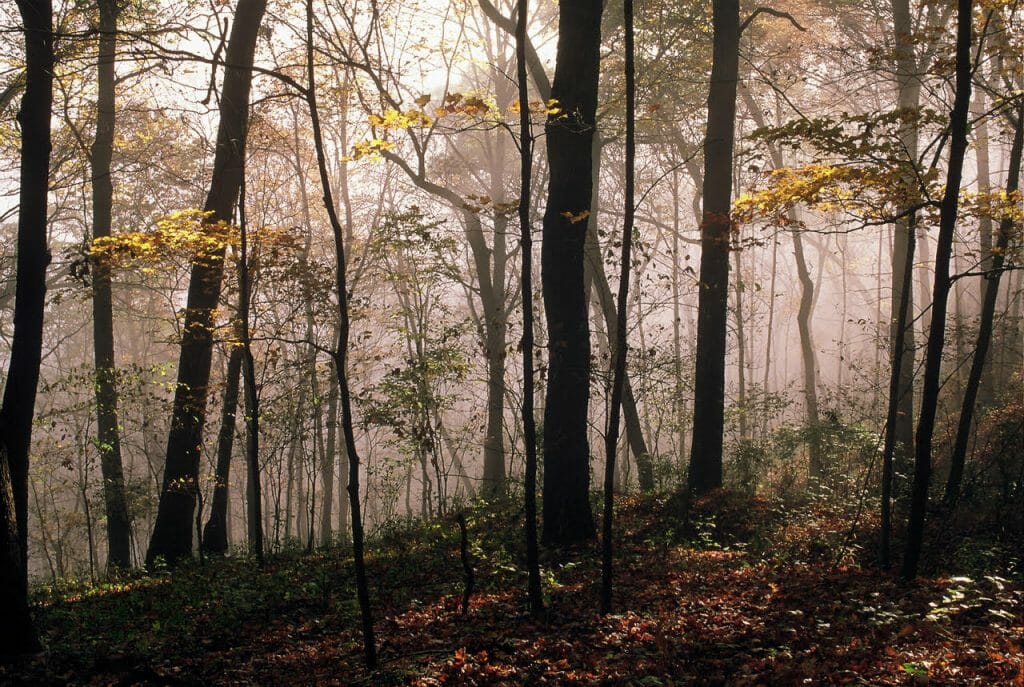Using Conservation Easements to Protect Land
A conservation easement is a legal agreement attached to the deed of a property that places limits and stipulations on that particular parcel, usually in perpetuity (forever). A growing number of organizations and individuals are using conservation easements to protect land for agriculture and wildlife, and they can be a powerful tool in a farm succession strategy. In preparation for an article published in the Winter 2019 issue of The Practical Farmer, we put out a request to speak with members who had experience with conservation easements. One member who generously agreed to share his story and experiences is Larry Stone.

The Stone property in Clayton County, IA; for Larry and Margaret Stone, a conservation easement was the way to protect their vision for the land that included wild spaces and healthy habitats.
Larry and his wife Margaret live in Clayton County in northeast Iowa on an almost 100-acre property that borders the Turkey River. Like many landowners who make use of conservation easements, the Stones wanted to see their property protected in perpetuity so that their vision for the land would still be realized long after they are gone. In particular, they wanted to protect the property from development. First, however, they had to find a conservation organization that dealt with conservation easements—a land trust. Luckily, Larry and Margaret knew just where to go.
“We wanted to be sure that over the long term the property didn’t get turned into a development or a rock quarry or something,” Larry says. “We’d been aware of and working with the Iowa Natural Heritage Foundation almost since their beginning, so it was the natural choice.”
With the help of Iowa Natural Heritage Foundation (INHF) and the Clayton County Conservation Board, the couple developed an easement that protects their property in perpetuity.
“We did reserve the right to have single family homes on the property, but prohibited subdividing and selling lots,” Larry says. “We also reserved the right for a small business, a photography business or selling books, that sort of thing.”
The easement prohibits strip mining, conventional farming, livestock grazing (although some family livestock, e.g., 4H livestock, is allowed), public use without permission, development for construction, etc. The easement does allow for some timber harvest, but only with an approved harvest plan written by a qualified forester. Overall, the easement that the Stones put on their property protects the recreational and aesthetic values of the property while limiting consumptive uses and development that would harm those values.
For Larry and Margaret Stone, the most restrictive piece of their easement is the requirements for tree cutting, especially along the river, but Larry says the trade-off is worth it. “The timber cut restrictions in our easement have limited some management,” Larry says, “but ultimately it also protects the aesthetics of the property.” Larry’s easement does reserve the right to maintain trails through the property down to the river, and he says that the knowledge that no one is going to abuse the woods is worth losing some management flexibility.
“We’ve walked the property several times now with [Clayton] County Conservation Board staff and it’s always pretty informal,” Larry Stone describes. “They know me and they know the land and they’re not really worried about it, but it’s important that they continue to monitor it after we’re gone.”
Larry’s biggest piece of advice for landowners thinking about a conservation easement is to do your homework and make the easement work for you. Every easement is different, he says, and you have to put in the work to make sure that the terms of the agreement and the economics of it are a fit for your particular situation, both now and in the future.
“Focus on the specific terms of the easement,” Larry explains, “Really make it your own—you have to think about your situation and whether the easement meets your needs and your vision for the land.”
For more information on conservation easements and land trusts, visit the following:
- Land Trust Alliance
- Iowa Landowner Options
- Iowa Natural Heritage Foundation
- Sustainable Iowa Land Trust
This material is based on work supported by the U.S. Department of Agriculture, under agreement number NR196114XXXXG003.
Any opinions, findings, conclusions, or recommendations expressed in this publication are those of the the author(s) and do not necessarily reflect the the views of the U.S. Department of Agriculture. In addition, any reference to specific brands or types of products or services do not constitute or imply endorsement by the U.S. Department of Agriculture.
